- Like
- X
- Digg
- Del
- Tumblr
- VKontakte
- Buffer
- Love This
- Odnoklassniki
- Meneame
- Blogger
- Amazon
- Yahoo Mail
- Gmail
- AOL
- Newsvine
- HackerNews
- Evernote
- MySpace
- Mail.ru
- Viadeo
- Line
- Comments
- Yummly
- SMS
- Viber
- Telegram
- Subscribe
- Skype
- Facebook Messenger
- Kakao
- LiveJournal
- Yammer
- Edgar
- Fintel
- Mix
- Instapaper
- Copy Link
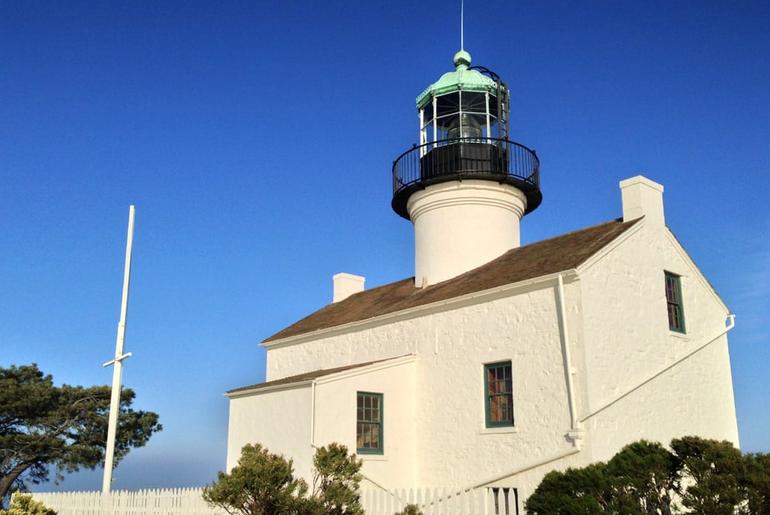
If you or any of your travel companions are interested in architecture, a trip to Point Loma Lighthouse will captivate you. However, upon arrival, you will realize that Cabrillo National Monument has much more to offer than just a lighthouse.
Situated on a protruding section of Point Loma lies a petite park that serves as a haven for nature lovers and military history enthusiasts. Established in 1913, the park pays homage to the momentous landing of Juan Rodriguez Cabrillo at San Diego Bay in 1542. A remarkable 14-foot-tall statue of Cabrillo, donated by the Portuguese government in 1939, stands proudly at the end of the point.
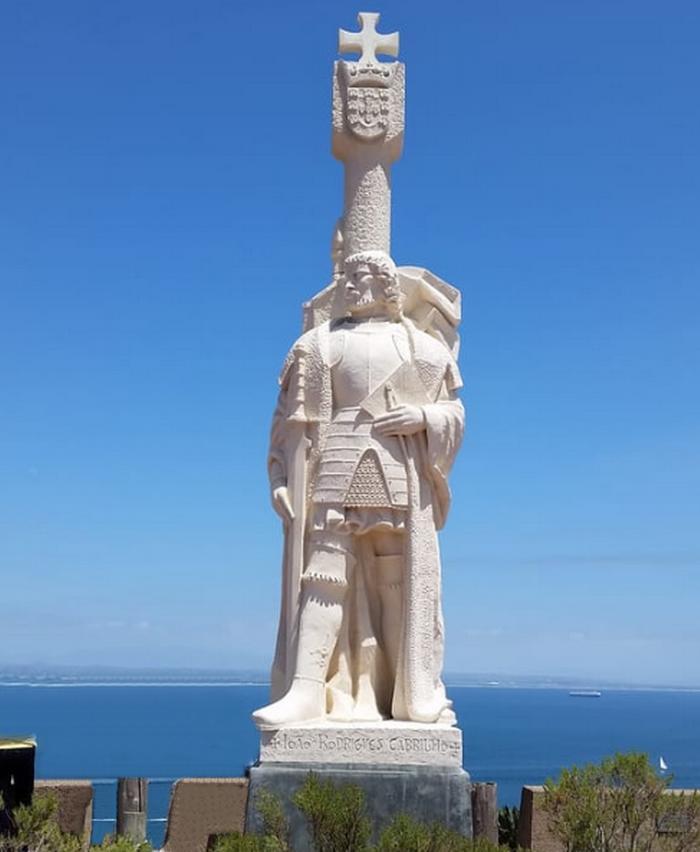
On a clear day, Point Loma in San Diego offers a breathtaking view of the Pacific Ocean, Coronado, San Diego-Coronado Bridge, North Island, Shelter Island, Harbor Island, San Diego Airport, Downtown San Diego, San Diego Bay, the mountains, and Mexico. It is truly a spectacular sight to behold.
The quaint Lighthouse is the beacon of the Cabrillo National Monument and sits on dramatic cliffs overlooking the Pacific Ocean. It is furnished with historically accurate furniture.
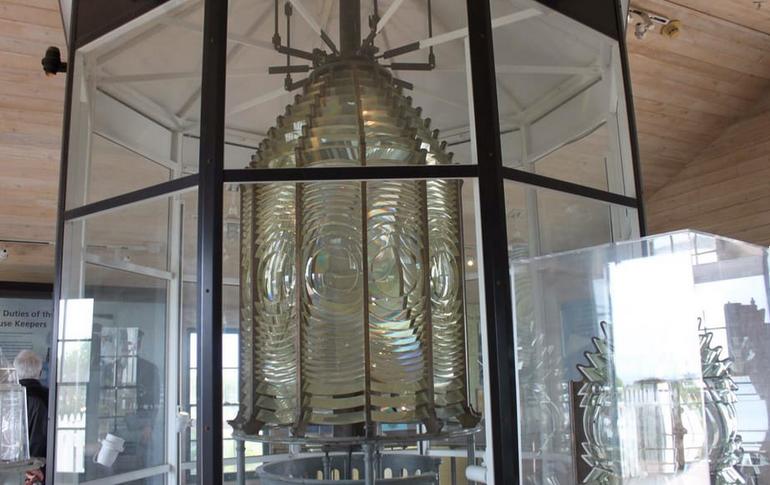
You are not allowed to go to the top of the building, but the Fresnel lens is still kept up there. When the newer Lighthouse was built in 1891, the original Lighthouse was boarded up, so it was well preserved when opened back up to the public.
You can learn about the fascinating history of the Lighthouse through ranger-led talks, displays, and brochures. Additionally, a two-mile self-guided walk through a coastal sage scrub forest starts right next to the Lighthouse.
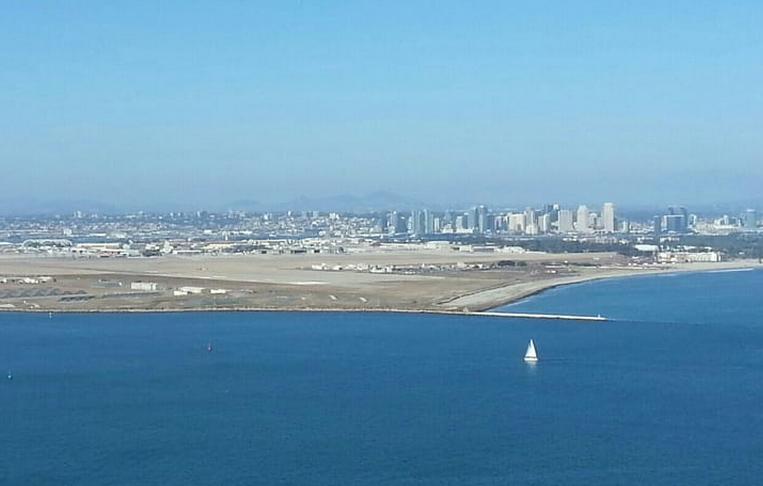
The Whaler’s Overlook is a scenic viewpoint located on the bluffs. It’s an excellent location for observing pods of dolphins passing by. You can even spot migrating gray whales with the help of a telescope that requires quarters. Additionally, there’s a small museum on the premises exhibiting models and explanatory images of ships similar to those commanded by Cabrillo in the early 1500s.
In addition, it includes replicas of navigational instruments of the day and information on the Neolithic tribes that once inhabited the area. The museum has an auditorium with scheduled, free, explanatory videos, restrooms, vending machines, and a gift shop.
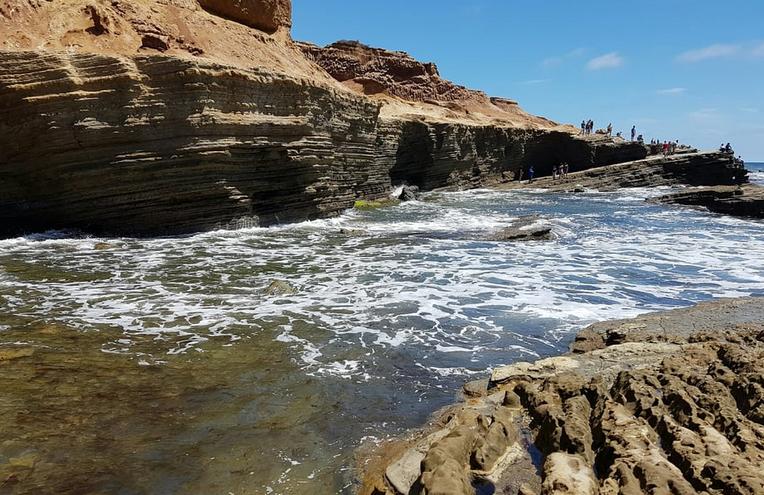
Hiking Trails & Tide Pools
Several short hiking and biking trails lead to and from the tide pools full of many intriguing forms of sea life. Escape the crowds and savor some serene moments with stunning views on the Bay Side trail beside the main walkway. You can even bring your furry friend along if they are leashed. Don’t miss this opportunity to enjoy quality time with your canine companion.
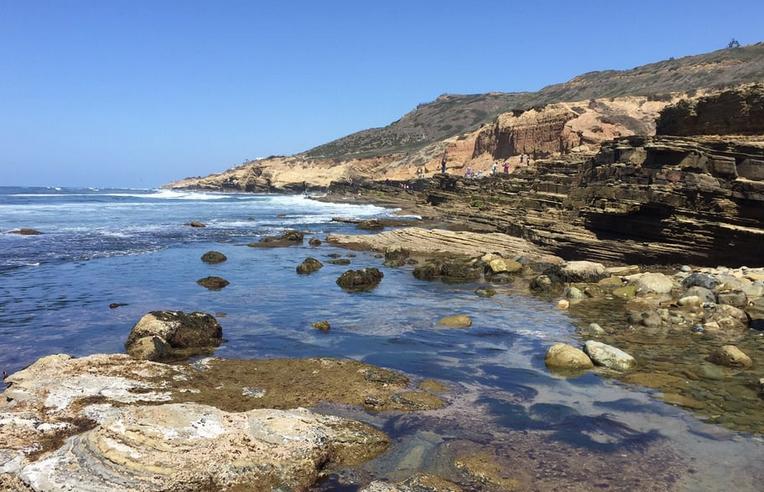
Aside from the Lighthouse, museum, and tide pools, there is the Coast Defense Exhibit, another tiny museum covering the history of Fort Rosecrans, which encompasses the park—several remaining remnants of the WWII facility, including the circular gun batteries.
The exhibit shows pictures of the massive guns that could fire 2,300-pound bullets 30 miles to sea. They were made to sink Japanese ships if they ever tried to invade San Diego. They never did, so it must have been incredibly dull but safe to be stationed here during WWII.
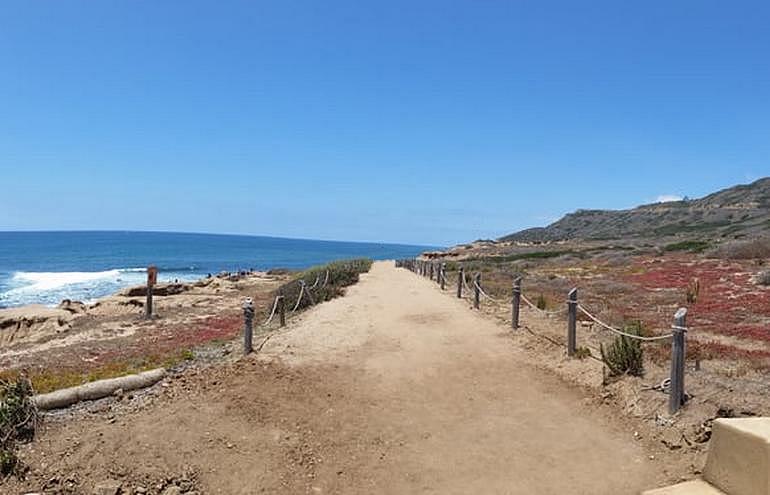
Where is the Cabrillo National Monument
To get to Cabrillo National Monument, located at the tip of Point Loma in San Diego, follow these directions from downtown: travel along Harbor Drive, passing the airport. Then, turn left onto Rosecrans Street. After that, take a right onto Canon Street and turn left onto Catalina Blvd., also known as Cabrillo Memorial Drive.
Follow Catalina Blvd. to the end. Catalina Boulevard is part of San Diego’s 59-mile Scenic Drive. A modest entrance fee is charged to enter the monument.
Cabrillo National Monument is open 365 days a year, from 9:00 AM to 5:00 PM.
More day trips from San Diego
Point Arena Lighthouse
Point Lobos State Reserve
- Like
- X
- Digg
- Del
- Tumblr
- VKontakte
- Buffer
- Love This
- Odnoklassniki
- Meneame
- Blogger
- Amazon
- Yahoo Mail
- Gmail
- AOL
- Newsvine
- HackerNews
- Evernote
- MySpace
- Mail.ru
- Viadeo
- Line
- Comments
- Yummly
- SMS
- Viber
- Telegram
- Subscribe
- Skype
- Facebook Messenger
- Kakao
- LiveJournal
- Yammer
- Edgar
- Fintel
- Mix
- Instapaper
- Copy Link
Leave a Reply